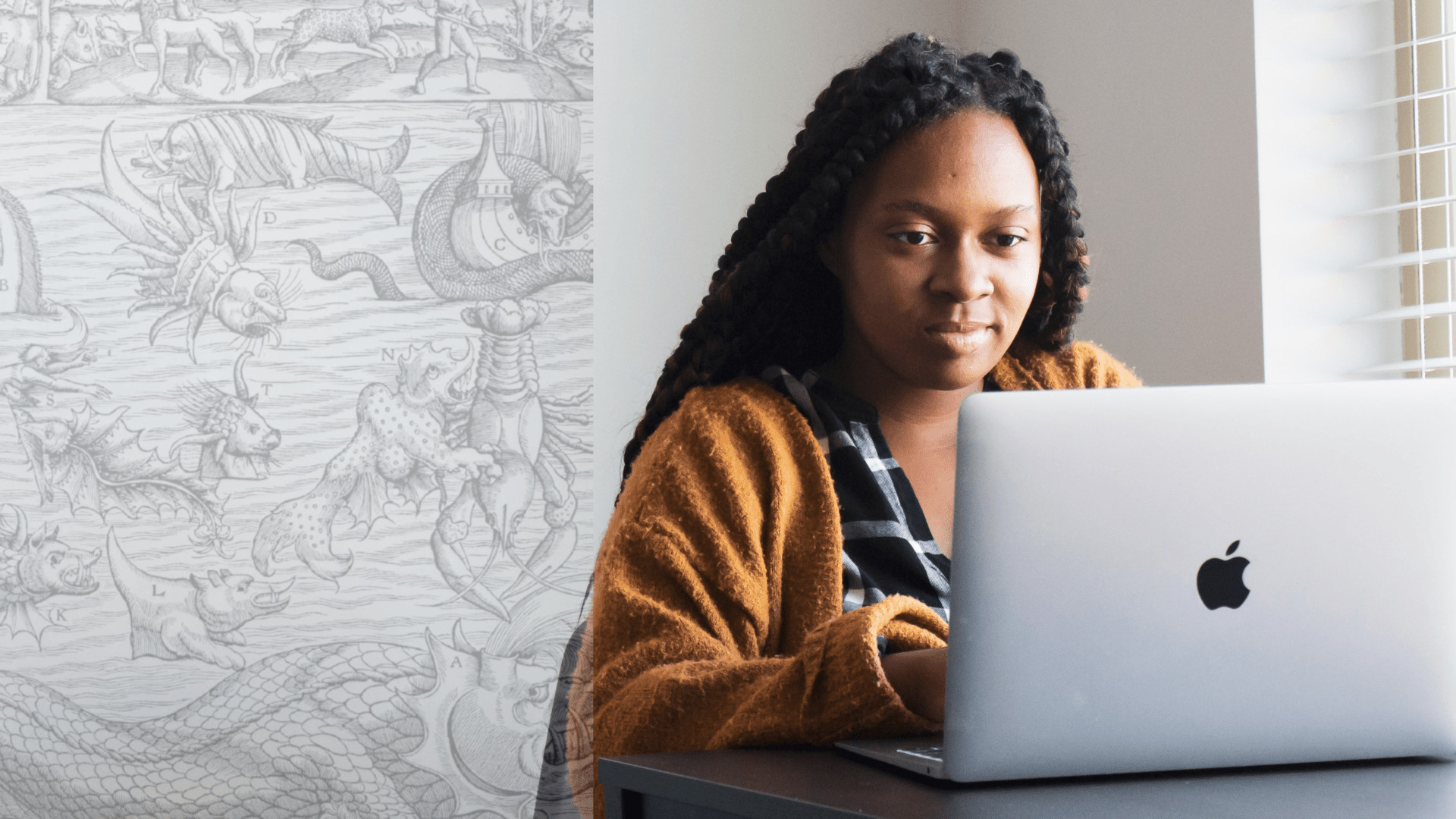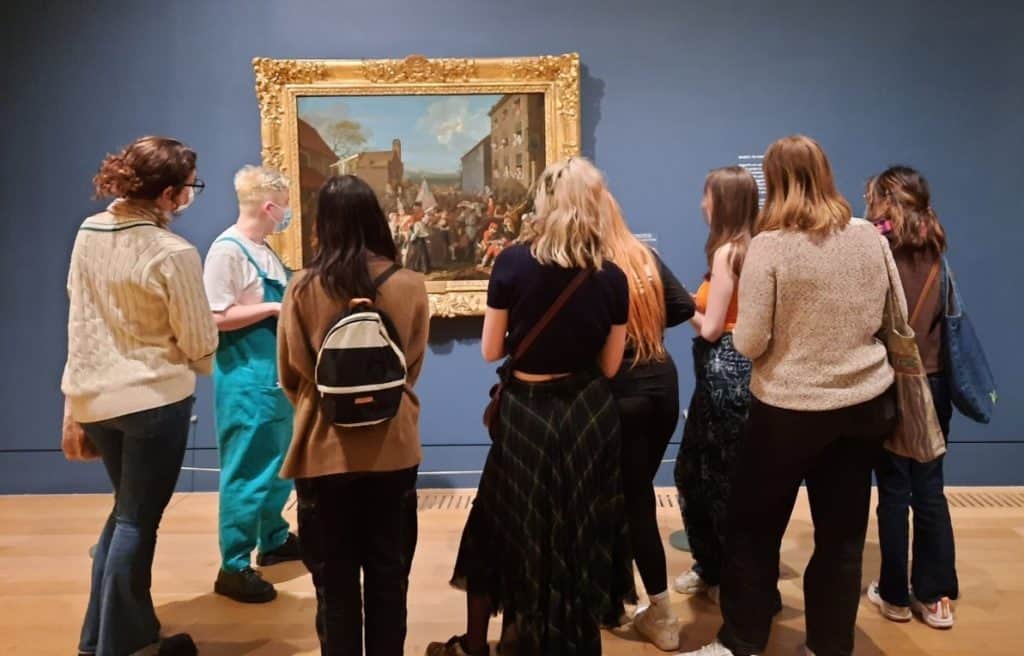│By Ben Wilkinson-Turnbull, Gale Ambassador at the University of Oxford│
Digital resources are vital to conducting academic research and teaching the next generation of scholars. As educators, teaching with technology can be daunting. In my previous blog posts PhDing in a Pandemic: The Impact of COVID-19 on Research and Teaching and Top 10 Tips for Teaching with Primary Sources, I’ve written about how you can help students get to grips with using a range of Gale Primary Sources including Eighteenth Century Collections Online, Burney Newspapers, and British Literary Manuscripts Online. But how do you help your students take the next step as digital humanists in a growing discipline? Teaching them how to use an innovative resource such as Gale Digital Scholar Lab is one way which you as an educator can help students develop their research skills and methodologies in a changing scholarly landscape.
Bringing Gale Digital Scholar Lab into the Classroom
So how do you go about teaching undergraduate students to use a tool like Gale Digital Scholar Lab? The best way is to get an expert in to help you! Gale’s product specialists are always happy to help educators and students alike, whether it’s answering queries over email or coming to your classroom to teach a session. I was lucky enough to have Chris Houghton, Head of Digital Scholarship at Gale, join me and my second-year undergraduate students in English at the University of Oxford for an online masterclass. The aim of this hour-long session was to introduce students to the concept of digital humanities, explain the basics, and teach them how to navigate Gale Digital Scholar Lab using an example related to their course of study.

Chris began with the basics, explaining the importance of Optical Character Recognition (OCR) and the basics of Text Mining, helpfully illuminated using examples familiar to the students from Gale Primary Sources. We then introduced them to the benefits of Gale Digital Scholar Lab, a program which allows researchers at any stage of their academic journey to build, clean, and analyse Content Sets. To get started with this research, Chris explained to the students they would need to build a Content Set, either by uploading text files or importing from Gale Primary Sources. They’d then need to clean their data using the Lab to make it suitable for whatever form of analysis they’re intending to undertake. Once all this is done, they could start analysing the data using the Text Analysis tools best suited to their research goals.
As educators, we all know that students learn best when they are taught using applicable examples relating to the material they are studying. At this point in the term, we’d been thinking about women writers working between 1660-1760, and I suggested to Chris during the planning stages of this class that this would be a helpful area to focus on in our session. After running through the Lab’s workflow, Chris had a Blue Peter ‘Here’s one I made earlier moment’ and brought out a sample project on the topic to explain its possible applications to their course content. Comparing women’s writing to that of their male contemporaries, Chris used Text Analysis tools on his pre-built Content Set to demonstrate how students could use the Lab to conduct original linguistic analysis on their texts to further their lines of argument.
Students responded well to the lesson and were enthused about the possibilities digital humanities could offer their research. As with any new resource or methodological approach that involves teaching with technology, it took them time to get to grips with it. If we’d have had more time, I think it would have been better to get students actively involved in the session by asking them to construct their own Content Sets as we went through the Lab’s workflow. By using active learning techniques, this would ensure students understood every step of the process and had the opportunity to be guided through the parts they were struggling with before leaving the session.
The Measurable Impact of the Lab on Student’s Written Work
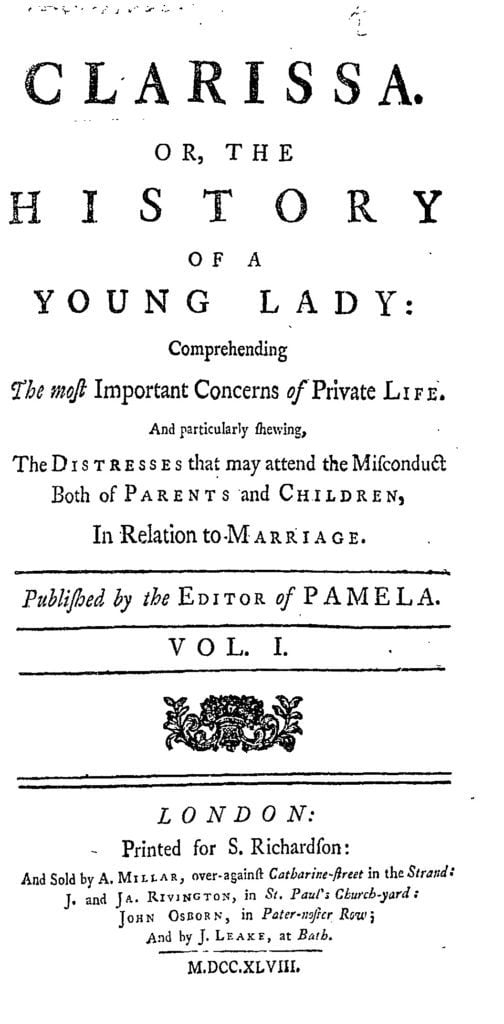
Nevertheless, the Lab had a clear impact on my student’s approach to the material they were studying. In her essay on eighteenth-century epistolary fiction, Brasenose student Yii-Jen Deng used the Lab to enhance her analysis of Samuel Richardson’s epic novel Clarissa (1748), as demonstrated in this extract:
“An analysis of the semantic differences between Lovelace’s letters to Belford and his letters to Clarissa, through topic modelling using Gale Digital Scholar Lab, demonstrates the stark contrast in style between them. Profound themes characterise Lovelace’s language towards Clarissa, with abstract nouns such as ‘virtue’, ‘expectation’, ‘reputation’ (though ‘body’ does form a telling anomaly), whereas pettier subjects, often with negative connotations, are found in his letters to Belford, as with ‘bribe’ and ‘schemes’. Such disparities are testament to Lovelace’s skill in roleplaying, evoking playfulness even as it conveys the covertness of manipulation.”
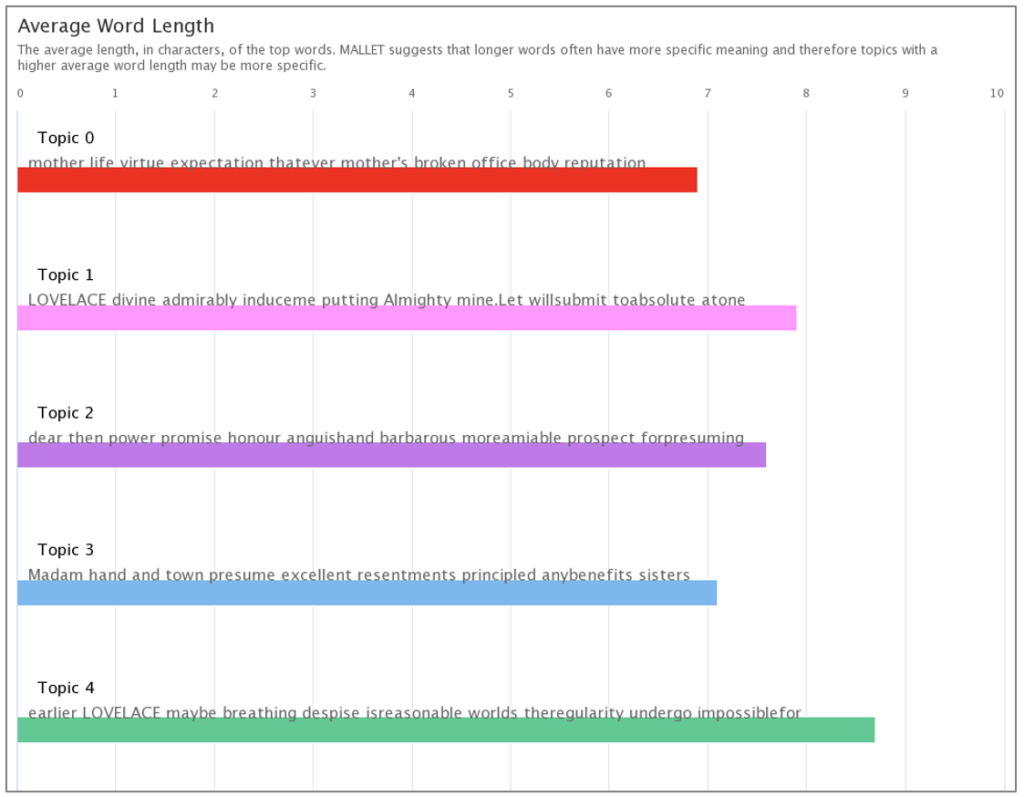
Visualisation created in the Lab by Yii-Jen Deng (permission granted for inclusion in this blog post).
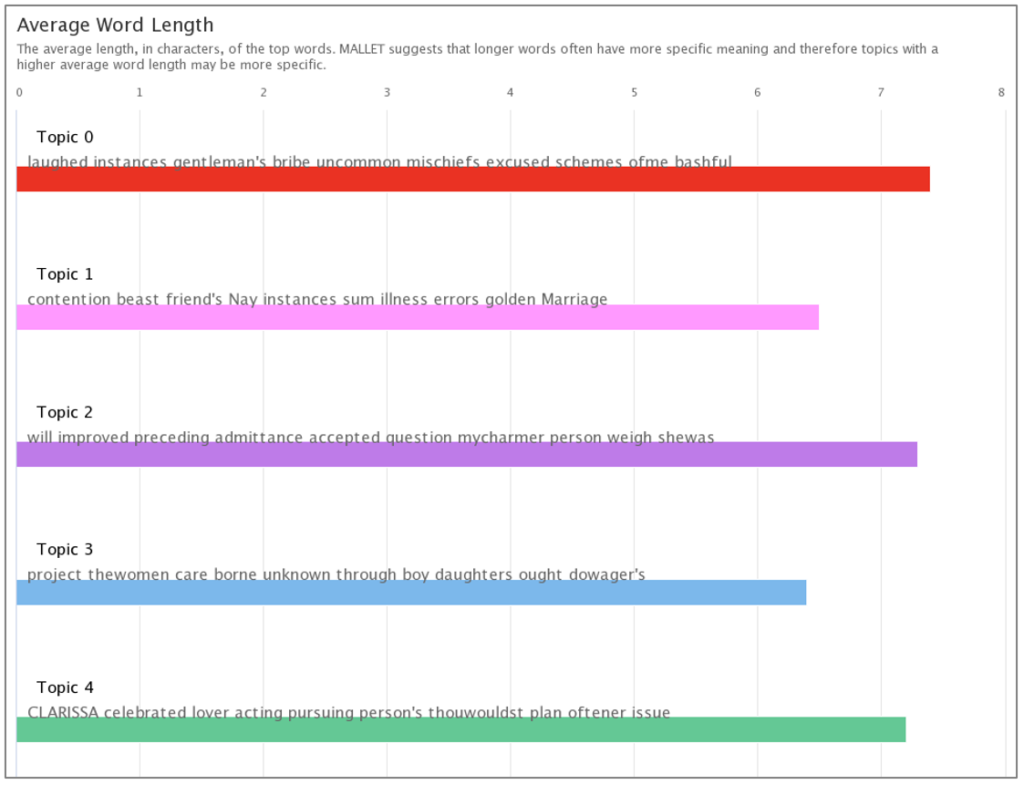
Visualisation created in the Lab by Yii-Jen Deng (permission granted for inclusion in this blog post).
By using the Lab to create her own Content Set of Richardson’s prose and analysing this material with the Topic Modelling Text Analysis tool, Yii-Jen was able to show how the villainous libertine Robert Lovelace’s language differed semantically based on whether he was interacting with his virtuous love interest Clarissa Harlowe or his friend John Belford. In so doing, Yii-Jen was able to demonstrate how modern methods are vital in developing new readings of older texts. Scholars of tomorrow need to be literate in digital research environments to undertake this sort of research. By inviting Gale’s product specialists to teach students about the innovative Gale Digital Scholar Lab software this difficult task is made achievable.
With thanks to Brasenose student Yii-Jen Deng for granting permission for extracts of her work to be used in this blog post.
If you’re interested in using Gale Digital Scholar Lab in your classroom, and would like further information or a supported lesson, contact: [email protected]
If you enjoyed reading about Ben’s experience introducing digital humanities methods to their students, you might like:
- How Gale Digital Scholar Lab Could Support Alternative Research Methods
- Practical Pedagogy with Gale Digital Scholar Lab, Part I: Developing Your Syllabus and Learning Objectives
- Practical Pedagogy with Gale Digital Scholar Lab, Part II: Approaches to Project-Based Teaching and Learning
- How Gale Digital Scholar Lab Made Digital Humanities Less Daunting
Blog post cover image citation: Design combining image by Daniel Thomas available on Unsplash.com, with Gale Digital Scholar Lab branding – Illustration of Mythical Sea Monsters by Sebastian Munster (a 16th century illustration of imaginary sea monsters from Cosmographia by Sebastian Munster, based on creatures from Carta Marina by Olaus Magnus), obtained from Getty Images.

